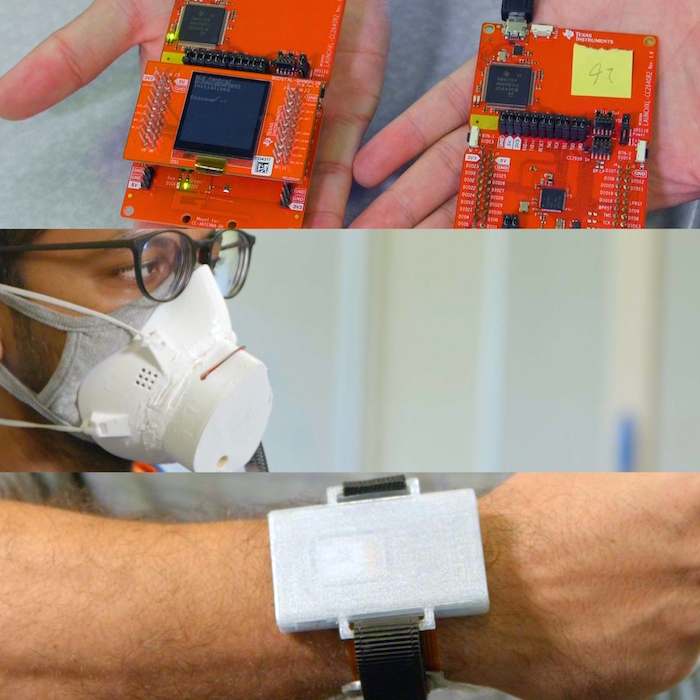A wristband that tells kids when they’re too close together at school. A wearable that detects a possible COVID infection before you feel sick. Even a mask that cleans the air around you. These real-life smart devices emerged when students and professors at the University of Florida’s Warren B. Nelms Institute for the Connected World turned their ingenuity in the Internet of Things to solutions for the pandemic.
The devices are in the prototype phase now and will get smaller, sturdier and more refined before they’re available to the masses. But they work. Here’s a look at them and how they could slow the spread of the disease.
ADAPT smart mask
What if a mask not only protected its wearer, but reduced the amount of virus in the air? That’s the idea behind the smart mask created by Swarup Bhunia, Ph.D., director of the Nelms Institute at UF’s Herbert Wertheim College of Engineering and the Semmoto Endowed Professor of IoT and a team of UF researchers. When a sensor in the mask detects particles the size of coronavirus droplets, it releases water mist that not only blows virus-laden droplets away but clings to the airborne virus, causing the particles to fall to the ground.
How it could help: Protecting health-care workers and people who need to be in crowded indoor settings; even non-COVID uses such as areas with severe air pollution.
TRIDENT smart band
Research shows that elevated temperatures that could be early indicators of a COVID infection are often missed by sporadic temperature checks. And because of variations in people’s base temperature, even a spike that’s detected might not be high enough to register as a fever. That’s why Soumyajit Mandal, Ph.D., is leading the development of the TRIDENT smart band, which uses machine learning to exclude factors that can confuse temperature readings. The wristband senses activity and ambient temperature, while constantly monitoring a person’s temperature via sensors on the radial artery, alerting the wearer (via an app) of potential infection so they can get tested and avoid spreading the disease.
How it could help: In situations where mass testing or screening is needed, such as employees coming back to the workplace, the wristband — expected to have a price point of $20 or less — could help clear workers to return and better allocate tests to those who could have an undetected infection.
RiskBand
Kids can struggle to maintain the recommended 6 feet of physical distance. A device that alerts them when they’re too close to a classmate could help, but outfitting kids with smartphones and connected wearables comes with price and privacy concerns. A team of Nelms researchers has a low-cost, privacy-preserving solution. Using a type of Bluetooth that draws very little power, their wristband measures Bluetooth signal strength and converts it to distance. If wearers get too near to each other, the bands signal them with light and vibration.
How it could help: Beyond alerting kids when they’re not distancing, the bands could help with contact tracing. Data from a classroom’s bands can be uploaded to the cloud at the end of each day, so if a student gets sick, health-care professionals can see which devices were in close contact.
This story was originally posted on UF News.
Check out more stories about UF research on COVID-19.

